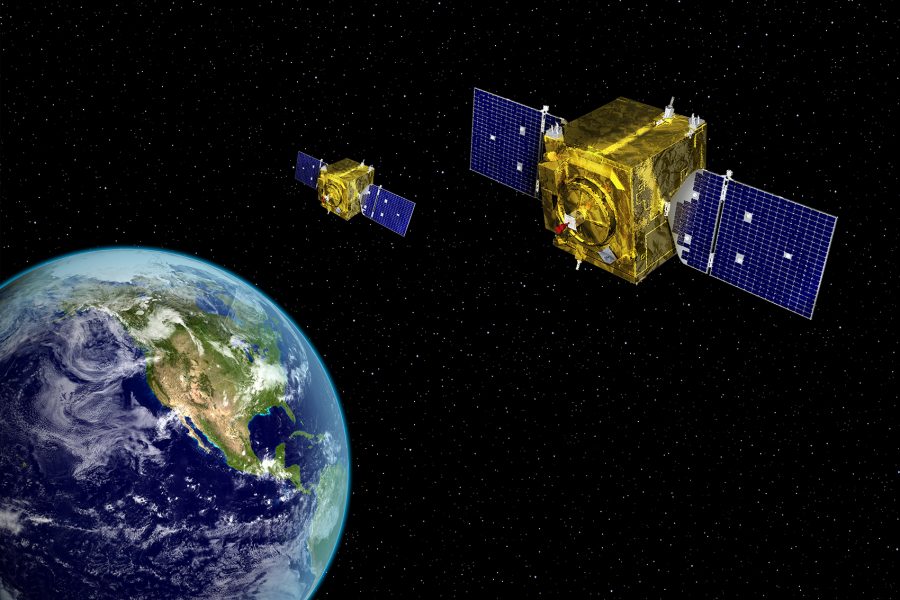Geosynchronous Space Situational Awareness Program supplies space-based tracking and characterization of manmade objects in geosynchronous orbit, aiding safety and enabling avoidance.
They are the “neighborhood watch” satellites augmenting the legacy Space Based Space Surveillance (SBSS) system. SBSS tracks and classifies manmade objects in low Earth orbit, and GSSAP extends this coverage to geosynchronous orbit.
The satellites themselves operate in near-geosynchronous orbit to effectively monitor objects and aid in preventing collisions in space. GSSAP carries EO/IR sensors and are able to maneuver to observe objects at close range. They can track objects without the weather and atmospheric disruptions that affect ground-based systems.
Two GSSAP satellites were launched in 2014 and attained IOC in 2015. Two more replenishment satellites launched Aug. 19, 2016, and became operational Sept. 12, 2017.
USSF completed a significant overhaul and upgrade of the GSSAP ground system software to enhance the reliability, speed, and security of the system in February 2020.
The upgrades also pave the way for future expansion of the constellation. The fifth and sixth sensors are slated for launch aboard the USSF-8 mission planned for launch from Cape Canaveral in mid-to late 2021.
Contractor: Northrop Grumman Space Systems (formerly Orbital ATK).
Operator/Location: USSF SpOC; Schriever SFB, Colo.
First Launch: July 28, 2014.
IOC: Sept. 29, 2015
Launch Vehicle: Delta IV.
Constellation: Four spacecraft.
Active Satellites: •GSSAP 1. Launched in 2014; on orbit, active. •GSSAP 2. Launched in 2014, on orbit, active. •GSSAP 3. Launched in 2016, on orbit, active. •GSSAP 4. Launched in 2016, on orbit, active.
Orbit Altitude: 22,300 miles, above geosynchronous.
Power: Solar panels.
